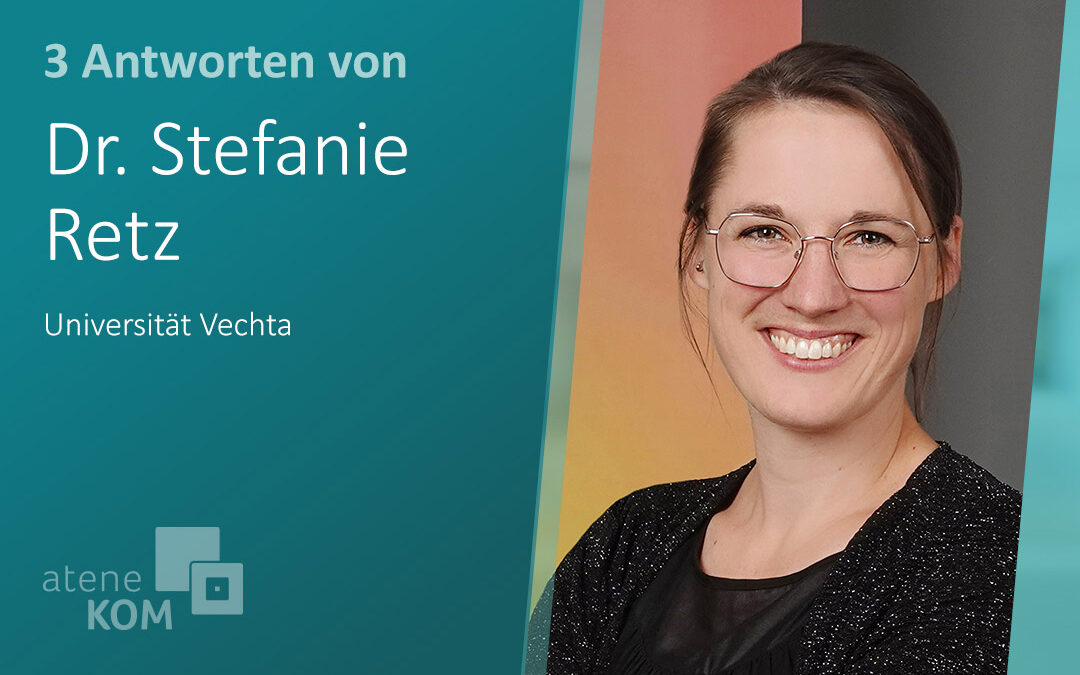On the aconium GmbH Future Journey, we meet people for whom digitalization is more than just a buzzword. Three questions for Dr. Stefanie Retz, Project Management: The “5G-Agrar” project plans to develop the use of 5G technologies in sustainable agriculture. The focus is on monitoring animal health and nutrient management in cultivated fields. The aim is to investigate the possibilities of networking a barn of the future with sensors in such a way that it can be operated largely autonomously.
What do you generally understand by “digitization”?
Digitization in agriculture and especially in the barn means in practical terms: away from faxes and handwritten notes. Much of the documentation, communication and information transfer still takes place via analog delivery bills, stable cards and the classic fax. Digitizing the enormous amounts of data that are generated in the barn, in the field and in the value chain makes work easier, secures data and avoids loss of information and transparency. In addition, completely new opportunities are being created to connect and link different data with each other and thus generate new insights and added value. By digitizing and networking all data from the parent animal to the fattening unit, from the feed to the slurry tanker, the entire production system can be continuously optimized intelligently and sustainably
Please describe the basic idea behind the “5G for sustainable agriculture” project. Why can 5G technology be the key to creating more sustainable and effective value chains in the agricultural and food industry?
The use of 5G enables a significant technological leap for livestock farming and food production and offers the prerequisites for a transformation of the agricultural and food industry into a sustainable, i.e. socially, ecologically, climate-friendly and economically resilient agricultural value creation system of the future. The “5G Sustainable Agriculture” project aims to use 5G to improve animal health and welfare and create protected transparency from farm to fork. A “real laboratory” has been set up in the district of Vechta for this purpose, in which the poultry and pig food value chains are modeled on a small scale and linked together using innovative 5G applications. At the same time, economic aspects as well as data protection and security are taken into account.
The multidirectional networking of the individual stages of the value chain means that data is collected, correlated and evaluated in real time using artificial intelligence (AI). The aim is to optimize animal welfare and animal health. For the first time, a farm balance sheet along the entire value creation system will take redundant and sometimes still analog documentation routines to a new digital level. This enables a whole new level of transparency from farm to fork.
What criteria do you apply when using digital technology in your work? Is digital technology, i.e. the use of 5G technology, the fundamental basis or one of many elements in the development of ideas and added value for a more sustainable agricultural economy?
5G technology is one element of many. First and foremost, digitalization must be implemented consistently. Then it is of crucial importance to get the data from one location to the next. The central building block here is the reliable availability of very fast and stable internet at really “every milk can”. This is where 5G comes into play. In order to be able to transport the very large volumes of data, the network must be correspondingly powerful. And in order to be able to react in real time to events in the barn, for example, information must be sent between communicating sensors and systems with correspondingly low latency.
Which technological characteristics (bandwidth, latency, number of end devices to be controlled) of the 5G standard play a particularly important role for you in the implementation of the project?
In the systems we are developing, many end devices (sensors, system controllers, cameras and computers or smartphones) will have to communicate with each other very quickly. Latency plays an important role in the field, while data density and the fast interaction of different end devices are particularly important in the barn.
Dare to look ahead: What are the next planned steps in the project, or what is your next big goal?
We are currently working on various use cases. The major challenge is to create barrier-free interfaces between many players in the chain and their data, different technology and systems. This is a prerequisite for developing an early warning system for tail biting, for example, or automated control of ventilation technology based on animal behavior. The aim is then to scale up these use cases so that they can actually be used in day-to-day livestock farming. However, this will only be possible once the corresponding 5G infrastructure has been established across the board and is available at low cost.

